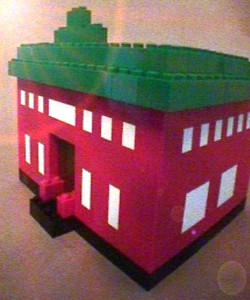Research Project ET001
Development of Designer Gods
Sponsor: School of Experimental Theology
Aim: Creation of gods with characteristics as determined by the user
Funding Source:
- A grant from the Ralf Lauren Foundation
Methodology:
Phase 1: (completed)
Obtain sample of Shroud of Turin - (purchased on ebay.)
Obtain 12* volunteer chaste women named Mary - ( task completed, and currently resident in the laboratory under highly controlled conditions.)
|

Theology laboratory
School of Experimental Theology |
Phase 2: (ongoing)
Obtain ova from volunteers. Using Raelian cloning technology, insert samples from the shroud into the ova, and stimulate cell division. Implant the ova in the volunteers.
Phase 3: (in approx 9 months)
Provided phase 2 has been successful,** there will be up to a dozen baby jesuses. Before placing them with adoption agencies, extract samples of DNA. Also, retain the umbilical cords as a source of stem cells. With the DNA and stem cells we will possess the pure essence of a god.
Phase 4: (approx 1-3 years)
Using genetic engineering, we expect to be add and remove various features to the gods' DNA. We will use another round of volunteers to bring these gods into the world. This will result in new gods who will consistently act in accordance with expectations.
Phase 5: Marketing
Once we have refined the process, the new range of gods will be brought to market. An initial license has been issued to Pollo whose marketing campaign will be based on - "Why share your god with billions when you can have your own?"
Footnotes:
* The original plan called for 100 volunteer virgin Marys. However, during the recruitment phase it was quickly determined that by the time the 100th volunteer would be found, the first 80 would no longer qualify. Accordingly, the number was reduced to an achievable level.
** If phase 2 is not successful (because, for example, the shroud may not contain a sample of Jesus's DNA,) we expect that thanks to the linen component (flax DNA) the outcome might be babies with a built-in supply of diapers. This may be a commercially viable product.
|



